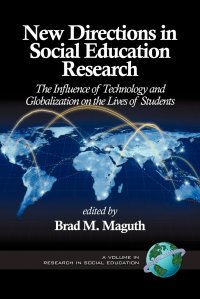Through rapid developments in commerce, transportation and communication, people once separated byspace, language and politics are now interwoven into a complex global system (Friedman, 2005). With therise of new technology, local populations, businesses and states are better equipped to participate and act ina thriving international environment. Rising instability in the Middle East is immediately reported to oiland gas brokers in the U.S. Within seconds cable channels, iPods, social networking sites, and cell phonesare relaying how protests in Egypt and Libya give hope to citizens around the world yearning for freedom.As events like 9/11 and the 2008 Financial Crisis have demonstrated, there is no retreating from theinterconnectedness of the global system. As societies strive to empower citizens with the skills,understandings and dispositions needed to operate in an interconnected global age, teachers are beingencouraged to help students use technologies to develop new knowledge and foster cross culturalunderstandings.As pressures mount for society to equip today's youth with both the global and digital understandings necessary to confront the challenges of the 21stcentury, a more thorough analysis must be undertaken to examine the role of technology on student learning (Peters, 2009). This work will highlightthe complex, contested, and contingent ways new technologies are being used by today's youth in a digital and global age. This text will presentaudiences with in-demand research that investigates the ways in which student use of technology mediates and complicates their learning about theworld, its people, and global issues Это и многое другое вы найдете в книге New Directions in Social Education Research. The Influence of Technology and Globalization on the Lives of Students (Brad M. Maguth)
New Directions in Social Education Research. The Influence of Technology and Globalization on the Lives of Students Brad M. Maguth
Подробная информация о книге «New Directions in Social Education Research. The Influence of Technology and Globalization on the Lives of Students Brad M. Maguth». Сайт не предоставляет возможности читать онлайн или скачать бесплатно книгу «New Directions in Social Education Research. The Influence of Technology and Globalization on the Lives of Students Brad M. Maguth»
